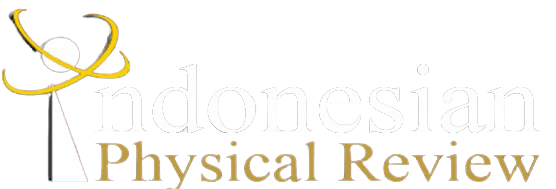THREE-DIMENSIONAL RESISTIVITY MODEL FOR GROUND WATER EXPLORATION IN VOLCANIC ZONE OF TIDAR PLETEAU, MALANG, EAST JAVA
DOI:
10.29303/ipr.v3i1.39Downloads
Abstract
Geoelectrical resistivity method is popular technique for subsurface mapping of groundwater, mining exploration, and structural geology. For case study in Tidar Plateau which characterized by hard rock of volcanic breccia, lava, tuff, and conglomerate, the groundwater system occurs only by the secondary porosity (faulting, facturing, and weathering). Therefore it becomes difficult task for determine position of good well site in Tidar Plateau. Geoelectrical technique by Schlumberger configuration was choosen to investigated the ground water system in this area. Total 5 Vertical Electrical Sounding (VES) acqusition point (400 m length measurement; spacing 10 m) for data measurement with coverage area about 400 x 400 m2. For data processing was used IP2Win, Progress3, and RockWork 16. The data processing results showed high accuration with avarage Root Mean Square (RMS) error about 0.3 – 8.3 %. According to resistivity results, the study area has resistivity between 0.3– 2.5x104 . The rocks which have resistivity between 0.3 – 12.52  interpreted as sandy-clay; 12.52 – 50  interpreted as wet sandstone (aquifer); 129 – 178  interpreted as conglomerat; 700 – 1300  interpreted as tuff, sand, and dry gravel; 2600 – 2.5x104  interpreted as volcanic breccia. This geoelectrical results has succesful finding the fresh water at VES 5 after drilled at depth 100 m at wet sandstone formation. To findout distrubution of aquifer layer, a three-dimensional (3D) resistivity model was developed. The 3D resistivity model shows the aquifer layer image look the dome-like structure and image the fracture regions which becomes the pathway of groundwater system.Â
References
Chandra, S & Ahmed, S. (2008). Geoelectrical method in estimating aquifer parameters of granitic hard rock terrain. Journal of Hydrology (357), 218–227. doi:10.1016/j.jhydrol.2008.05.023.
Chand, R., Chandra, S., Rao, V.A., Sing, V.S., Jain, S.C., (2004). Estimation of Natural Recharge and it’s dependency on subsurface geoelectric parameters. J. Hydrol (299). 67-83.
Bakare, K. M., Aizebeokhai, A. P., Oyeyemi K. D. (2019). Investigating groundwater pollution at an open dumpsite using 2D geoelectrical resistivity imaging and vertical electrical sounding. IOP Conf. Series: Journal of Physics: Conf. Series 1299 (2019) 012077 IOP Publishing doi:10.1088/1742-6596/1299/1/012077
Asfahani, J. 2019. Characterizing and deriving the constraints and hydrogeological conditions in semi arid Khanasser Valley region in Syria. Page: 37-66. https://doi.org/10.2478/congeo-2019-0004
Mohamaden MII. (2016). Delineating groundwater aquifer and subsurface structures by using geoelectrical data: Case study (Dakhla Oasis, Egypt). NRIAG Journal of Astronomy and Geophysics (5 247–253). doi.org/10.1016/j.nrjag.2016.05.001
Omusuyi GO, Adeyemo A, Adegoke AO. (2007). Investigation of groundwater prospect using electromagnetic and geoelectric Sounding at Afunbiowo, near Akure, Southwestern Nigeria. The Pacific Journal of Science and Technology 8 (2), 172-182
Adeeko TO, Muhammad H, A. (2015). Geophysical Survey Involving Twelve Vertical Electrical Sounding (VES), Lokoja Area Council Kogi State. International Journal of Scientific Research in Environmental Sciences 3(7) 0256-0265. doi.org/10.12983/ijsres- 2015-p0256-0265
Olayinka AI, Amidu SA, Oladunjoye MA,. (2004). use of electromagnetic profiling and resistivity sounding for groundwater exploration in the crystalline basement area of igbeti, southwestern nigerian. Global Journal Geological Sciences 2(2). 243-253
Zohdy, A. A. R., (1969), The use of Schlumberger and equatorial soundings in ground water investigations near El Paso, Texas, Geophysics 34 (5), 713-728, SEG Library.
Telford, W.M., Geldart, L.P. dan Sherif, R. E., (1990), Applied Geophysics, 2nd Ed., Cambridge University Press, Cambridge, UK. 522-577.
Hermawan, O. R., and Putra, D. P. E., (2016), the effectiveness of wenner-schlumberger and dipole-dipole array of 2d geoelectrical survey to detect the occurring of groundwater in the gunung kidul karst aquifer system, Yogyakarta, Indonesia, Journal of Applied Geology, Vol. 1 (2), 71-81.
Sheriff, R E., (2002). Encyclopedic Dictionary of Applied Geophysics, 4th edition“, SEG Tulsa, Oklahoma.
Telford, W.M.; Geldart, L.P.; Sheriff, R.E. (1990). Applied Geophysics, 2nd ed.; Cambridge University Press: Cambridge, UK,
Santosa, S. & Suwarti, T. (1992): “Peta Geologi Lembar Malang, Jawa (Geological Map Of The Malang Quadrangle, Jawa),“ Pusat Penelitian dan Pengembangan Geologi, Bandung.
Todd D.K. 1980. “Groundwater Hydrology“. John Willey & Sons. Inc. New Work, 2d.ed.
License
Copyright (c) 2020 Indonesian Physical Review

This work is licensed under a Creative Commons Attribution-NonCommercial-ShareAlike 4.0 International License.
Authors who publish with Indonesian Physical Review Journal, agree to the following terms:
- Authors retain copyright and grant the journal right of first publication with the work simultaneously licensed under a Creative Commons Attribution-ShareAlike 4.0 International Licence (CC BY SA-4.0). This license allows authors to use all articles, data sets, graphics, and appendices in data mining applications, search engines, web sites, blogs, and other platforms by providing an appropriate reference. The journal allows the author(s) to hold the copyright without restrictions and will retain publishing rights without restrictions.
- Authors are able to enter into separate, additional contractual arrangements for the non-exclusive distribution of the journal's published version of the work (e.g., post it to an institutional repository or publish it in a book), with an acknowledgment of its initial publication in Indonesian Physical Review Journal.
- Authors are permitted and encouraged to post their work online (e.g., in institutional repositories or on their website) prior to and during the submission process, as it can lead to productive exchanges, as well as earlier and greater citation of published work (See The Effect of Open Access).





